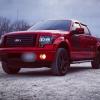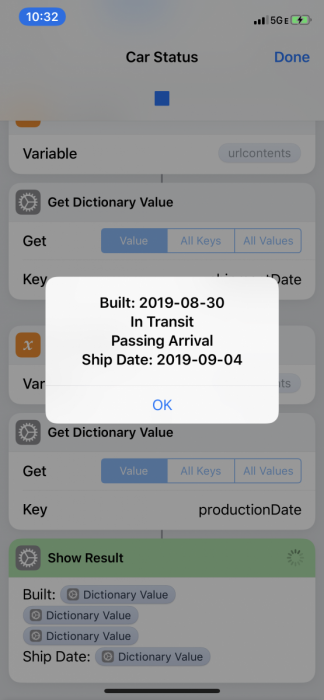Leaderboard
Popular Content
Showing content with the highest reputation on 09/06/2019 in Posts
-
If talking about Ford and Ford vehicles and competing vehicles is dull then maybe this isn’t the best forum for you.....2 points
-
That prototype is using an Escape body, so nothing about it is revealing.2 points
-
It's a nice truck, but $35k for a wheezy diesel cobbled into it with a Chrysler trans from that era? You have too many zeros in that price tag, bud.2 points
-
So, if they compare a donut to a bagel Taste: Donut 10 Bagel 5 How well it toasts Donut 0 Bagel 10 How it tastes with cream cheese Donut 0 Bagel 7 Total Donut 10 Bagel 22 Winner: Bagel2 points
-
More from HDT< Ford's New 7.3L Engine & Standard PTO Lauren Fletcher, Heavy Duty Trucking (HDT) / September 5, 2019 Ford has released some of the vital performance numbers for its all-new 7.3L gas engine that it introduced earlier this year as the latest powertrain option for its 2020 Super Duty lineup. The big-block engine cranks out best-in-class gas V-8 output of 430 hp at 5,500 rpm and best-in-class torque of 475 lb.ft. at 4,000 rpm in Super Duty pickups, according to the company. A dyno-certified version of the 7.3L V-8, producing 350 hp at 3,900 rpm and 468 lb.-ft. of torque at 3,900 rpm, is standard on the F-450 chassis cab; the F-550; the new F-600, F-650, and F-750 Medium Duty trucks; and F-53 and F-59 stripped chassis models. Also new on the 2020 Super Duty Chassis Cab, a power take-off (PTO) provision will be included as standard with the third-generation 6.7L Power Stroke turbo diesel engine for auxiliary power needs on commercial vehicles. “Adding PTO as standard on Super Duty Chassis cab vehicles with the diesel engine protects both the customer and dealer as it is often an overlooked option,” said Kevin Koester, Ford Commercial Truck Brand Manager. “It’s a critical component to deliver power on the move and operate equipment while the engine is running.” The New 7.3L Engine The 7.3L V-8 features an overhead valve architecture that helps get heavier loads moving sooner due to power low in rev range, according to Ford. It also features a variable-displacement oil pump, extra-large main bearings, forged steel crankshaft, and piston cooling jets to help manage temperatures under heavy load. It will be available first in Super Duty F-250 and F-350 pickup models. It joins the 6.2L V-8 gas engine in Super Duty’s lineup and the upgraded third-generation 6.7L Power Stroke diesel V-8. The 7.3L engine is paired with the all-new Ford-designed and Ford-built 10-speed heavy-duty TorqShift automatic transmission on all models except F-650 and F-750, which retain the heavy-duty 6-speed. “The 7.3L is designed for maximum durability in the harshest environments given that our customers live and work in these conditions every day,” said Joel Beltramo, Ford manager for gas V-8 engines. “This engine has the largest displacement in its class and is designed to provide benefits in key areas like power, durability, ease of maintenance, and total operating costs.” Updated PTO Offerings Fleets that depend on work trucks often need to power additional equipment, either stationary or while moving. Ford’s Live-Drive PTO allows commercial customers to power industrial equipment and accessories, including generators, snowplows, and hydraulic units while the truck is in motion. Combined, the 6.7L Power Stroke and all-new TorqShift 10-speed heavy-duty automatic transmission with the PTO provision delivers best-in-class stationary torque of up to 300 lb.-ft. for commercial vehicle bodies that require direct-to-component or hydraulic body motor power, according to the company. “For a lot of our commercial and heavy-duty retail customers, PTO power is the only way they can get a job done,” Koester said. “More standard PTO torque gives upfitters and customers the knowledge and comfort that they’ve got a chassis capable of the heaviest workloads.” A PTO allows fleets to mount accessory equipment to the transmission for auxiliary power from the engine to increase application functionality when direct or hydraulic power is required, such as generators, cranes, wreckers, pumper trucks, and boom lifts. The PTO provision will remain optional on 2020 Super Duty Pickup models and 7.3L gas V-8 Chassis Cab models.1 point
-
Bellanca, you’re very fortunate. Mine was built more than a month before yours and still hasn’t shipped.1 point
-
When you fail to get back what you once HAD you are not moving forward. (That's with the company making money) It will pass by the magical 51%1 point
-
From HDT Test Drive: Hino's XL 8 Class 8 Straight Truck Jim Park, Heavy Duty Trucking (HDT) / September 9, 2019 We waited nearly a year and a half for a ride in one of Hino’s new XL Series trucks. This Class 8 straight truck, configured with a 24-foot reefer box, is pretty typical of the applications this truck will see when customers get their hands on them. After all that time, I have to say it was worth the wait. According to Glenn Ellis, Hino’s senior vice president for customer experience, Hino had been toying with the idea of getting into the heavy Class 7 and Baby 8 markets for 10 years, and finally got down to serious work on the project in 2015. Three years later, in March 2018, Hino launched the XL at the Work Truck Show in Indianapolis. We hadn’t heard much about the XL Series since then, but Hino offered us a test drive a day before the official grand opening of its new 1-million-square-foot manufacturing facility in Mineral Wells, West Virginia. “The truck will be offered in a 4x2 straight truck and tractor configuration as well as 6x2 straight truck and tractor,” Ellis said during its premiere at the Work Truck Show. “We are targeting the 33,000- to 60,000-pound gross vehicle weight and the 66,000-pound gross combination weight segments, which have historically been voids in our product lineup.” Ellis sees the XL in segments such as construction, utility, beverage, reefer box, roll-off, and towing and recovery. “The XL represents an opportunity for Hino to expand our presence into a much larger customer base than we have had in the past, especially in the food and retail delivery in urban environments.” All XL series trucks are powered by the A09 turbo-diesel engine. It’s new to North America, but more than 50,000 of them are already working in other markets around the world. It has been in production since 2007 so makes its North American debut with 15 billion real-life miles behind it. The 8.9L inline-6 engine produces 300-360 hp and 900-1,150 lb-ft of torque. The A09 features common-rail fuel injection, a variable geometry turbocharger and Jacobs engine brake. Hino claims a B10 life rating of 1 million miles. (B10 is the expected engine life in miles of operation before 10% of that model of engines in operation will require a major repair, overhaul or replacement.) In the cab The tall, squarish cab is a trademark of sorts with Hino’s conventional models, but the XL interior is a fresh design. It has an automotive style to it, and the driver command center is grouped with the priority instruments and controls front and center. The less-used bits are pushed off to the right but still well within reach. The speedometer and tachometer surround an LED driver display that offers a selection of menus, from current and historical fuel economy to various engine parameters. I found the display a bit dim, but it was extremely bright outside, so it might have just been a question of contrast. The controls for the display menus are on the left side of the steering wheel for easy manipulation with your thumb. The cruise control switches are on the right side of the steering wheel. The steering wheel has some fore-and-aft and up-and-down adjustment, but it's fairly limited. Sitting high up in the seat as I do, I found the top of the tach and speedo were obscured by the wheel. Not a big deal, really. And curiously, the primary and secondary air reservoir gauges are calibrated in 10-pound/square-inch increments, so when the tanks are at full pressure, the gauges read 12, rather than 120. On the sides of the dash A-panel are two large heat/air conditioning vent openings, which provided terrific cooling airflow around the driver. Just to the right of the A-panel is a card slot that serves no purpose here in North America, but I suspect is a requirement in Europe and other markets where they use driver smart-cards with electronic tachographs. The near-side of the B-panel holds the radio and directly beneath that, the HVAC controls. Further out to the right is a space that could be fitted with any of several devices; our test truck had the controls for the reefer unit in that spot. It’s a more convenient location for those controls than outside on the front of the cargo box. The test truck had a National air-ride driver’s seat with a right-hand arm rest. The passenger seat was a two-person bench seat. The cab upholstery is decent, and it did a good job of keeping engine and road noise out of the cab. I found it compared favorably to other city trucks I’ve driven recently, but it’s not as quiet as some of the newer on-highway trucks I've driven, which are now approaching passenger-car noise levels. The two features I liked the most were the abundance of glass and the amazing door arm-rest and grab bar for pulling the door closed. The windshield is massive at 2,385 square inches, and the side windows are cut low at the front for astonishing visibility close-in around the truck. It was really the first thing I noticed when I climbed in: I sat up nice and high in the seat and I could see everything around the truck – definitely something you want in a truck that's working in the close confines of an urban environment. The slope of the hood helped here, too. There was really nowhere for stray pedestrians to hide. The doors boast an 80-degree opening, making it very easy to climb into. The steps and grab bars on the A- and B-pillars are well-placed. The steps are nicely engineered, especially the top step – it’s more like a landing platform. It’s big and square and flat, which is huge safety feature for drivers who will be entering and exiting the cab dozens of times a day. Getting the hood open for the trip inspection is light work and the hood latches are big and easy to manipulate. Under the hood is the pretty tightly packed A09 engine. Fluid levels such as coolant and power steering fluid are easy to check, but the transmission fluid dipstick is a bit of a reach. The oil dipstick is tucked down low and nestled in amongst a bunch of pipes and hoses. It might be a bit hard to grab for a driver wearing big gloves, but it was easy enough to reach bare-handed. All these inspection points are on the left side of the engine compartment, while the windshield washer reservoir is on the right. (No big deal, since you have to walk around and inspect that side anyway.) A couple of other points worth mentioning are the three-piece front bumper and the jump-start posts, which are located under the driver’s door beside a lockable battery lockout switch. Bumpers obviously can take a beating in the city, so Hino is helping to minimize repair costs with the three-piece design. Driving the XL A few features of the XL are immediately obvious as you climb aboard and strap in. First, the trip up into the cab is probably one of the best I have encountered. The steps are evenly placed, and they are big and grippy. The door opens wide enough for even the largest driver, and there’s a lot of belly room behind the wheel – way more than I needed. I didn’t measure anything, but I had the impression the XL is one of the tallest cabs (and driver positions) around. The mirrors are well-placed and hardly compromise lateral visibility at all. They are mounted slightly forward, so you still have a clear view of traffic approaching from the right. The mirrors are door-mounted and jiggle a bit when you go over a good bump, but they do not vibrate at all when idling. The 6-speed Allison 3000 RDS transmission was wired with Fuelsense 2.0, and that makes for much more comfortable, lower-rpm shifts, with a smoother launch and a quieter ride up through the gears. Our test truck was equipped with a 24-foot box, tandem drive axles and a 14.6K front end, but it was surprisingly smooth and maneuverable for its size. The truck had a 50-degree wheel cut, making it possible to complete a right-hand turn from the right lane without crossing over into the next lane, except on some of the narrower streets on our route. Standard-width lanes posed no problems, right or left. The steering was firm, but not stiff, and just right on the highway. We crossed over a really narrow bridge driving through Parkersburg, West Virginia, one that makes drivers watch both mirrors to make sure there’s a little space on the right and the left. The confident steering and the generally well-engineered feel of the truck let me cross the bridge without once feeling unnerved by the tight lanes. I drove around Parkersburg for about an hour, negotiating the city streets, traffic lights, bridges and railroad tracks, and never felt the truck fighting back. We had about 10,000 pounds in the box, hardly a match for the A09, but it was enough to keep the drive wheels on the ground going over bumps. Even with that bit of weight, the beefy front suspension felt smooth and sturdy, not bone-jarring. And for a rubber-block drive axle suspension, the 40,000-pound Hendrickson Haulmaax was surprisingly unobtrusive. I covered about 10 miles on Interstate 77 and about the same distance on some winding West Virginia back roads between Parkersburg and Mineral Wells. I give the XL top marks for handling in both these environments, with the added bonus of getting up to speed in the interstate pretty quickly. The Dana rear axles had a drive ratio of 5.29:1, so we were running at 1,700 rpm or so at 60 mph. That's a little fast for optimum fuel efficiency, but a ratio like that gives it the gradeability and startability you need in the city. Hino trucks are often seen as pricier than some of the competitive models, but they come with an impressive list of standard features and warranty coverage that you pay extra for with other brands. For example, all conventional models, including the XL Series, come standard with 5-year/250,000-mile extended warranty coverage, including key components such as fuel injectors, the fuel injection supply pump, and the turbocharger. On top of that, Hino Class 6-8 trucks now come standard with a 5-year, unlimited-mileage transmission warranty on all Allison transmissions. Hino will build all the XL Series trucks at the new Mineral Wells plant. Production began earlier this year, and the company say it plans to build 2,500 XL7 and XL8 trucks in the plant before year’s end. Spec Sheet: 2020 Hino XL8 6x4 24-ft Kidron refrigerated body, Thermo King T-880R TRU Engine: Hino "A09" 8.9L 300 hp/1,150 lb. ft. Trans: Allison 3000 RDS 6-speed Driveline: Dana Spicer SPL 170 Front End Dana Spicer E-Series E-1462RW 14.6K 14.6 K tapered leaf springs ZF TRW TAS 85 power steering Bridgestone M870 315/80R22.5 Rear End Dana Spicer DSH40 40K axles; 5.29:1 ratio Hendrickson Haulmaax 40K Bridgestone M760 11R22.5 Standard equipment: Drum brakes, LED headlamps, cab air suspension, air-ride driver's seat, cruise control, air conditioning, Wabco On-Lane lane departure warning w. suspend switch, Wabco On-Guard collision mitigation, Hino Insight telematics (one year free), Hino Insight remote diagnostics and case management (five years free) Wheelbase: 261 in. Vehicle weight rating: 54,600 lb. .1 point
-
1 point
-
What they are showing: is not the same vehicle as this (Mach E): <I'm beginning to wonder if the first photo is the C/D model that was moved to Michigan>1 point
-
Does the ad talk about the delays in shipping? I ordered my 2020 Explorer back in March and its no where to be seen. It was built on June 22nd and is "In Production, Sent Off-Site" whatever that means. I read somewhere that Explorers sent to Flat Rock for issues remediation will be "first in, last out" and that all may not ship until December. Nine months to receive a vehicle is ridiculous. Some transparency from Ford would be most helpful and appreciated. By the way, my Dealer seems to know less about my VIN than I do. That doesn't look good for Ford.1 point
-
1 point
-
Don't get me wrong, the body and much of the chassis is NICE. However the frame has been altered and the wire harness has been butchered. New holes in the fender liners. All the cobbled up parts to install it are one-offs including trans cooler lines, hoses, the harness that he fabricated etc. Not sure, but I don't see a vacuum pump for the brake booster, so potentially, no power brakes. It would probably be worth what they are asking if it had the original drivetrain. The wheezy 70s diesel and 70s Mopar trans really shoot it in the foot. My 77 was that color.1 point
-
Truthfully not any different than when the altima came out in the 90s they compared it to a Mercedes and it was better than the Mercedes according to the advertising. All these “car enthusiasts” magazines are about advertising dollars. I trust about 10 percent of what the media says. Just like politicians, they all have their own agenda. Im sure the Kia is a formidable suv. However, compare it to its class.1 point
-
true, but much of that data is old/obsolete most recent and accurate data i've seen is 5%. heck CEO pay on each car is HIGHER then the cost of UAW labor. its time to pay up1 point
-
Not if it's removable too .....hmmm1 point
-
I am on my second Lincoln vehicle but my next purchase may be a Ford Bronco which has nothing to do with being "hard pressed" with lack of money issues...There will be no Lincoln counter-part to the Bronco and I am willing to bet there will be a Titanium, Platinum, or King Ranch variant of it....1 point
-
It’s happening more often now and we will just need to accept the fact of mainstream automakers going more premium. not surprised to see it. After all, kia and hyundai are making major strides. where some of the main differences reside is the powertrain, “luxury” amenities, lower volume for the luxury brand, and service offerings where luxury brands have drop off services with loaner vehicles no question asked and avoidance of going into a dealership that sells $13k cars. trust me, the kias and hyundai’s drive nothing like the aviator. also, it works up stream... luxury buyers who are used to luxury vehicles aren’t going to go downstream unless they are seriously hard pressed - as in lack the money all of a sudden.1 point
-
1 point
-
All of what you posted shows that building a PHEV is more complicated than building a straight BEV Credits aside, Ford’s experience with hybrids and PHEVs means that the progression to BEVs is much easier as all the body construction and mass production experience comes across. We should not mistake Ford’s lack of a BEV as any indication of lack of capability. They’re timing their run to happen after Tesla does all the heavy lifting of credibility and charging network and battery development Then like a thief in the night, Ford (and GM) will be there to steal Tesla’s patch.1 point
-
They should have just used the Chinese market front end. Looks so much more upscale and grown up design than the cartoon like US market one.1 point
-
1 point
-
The grille on the kuga st line and vignale are both the same shape (different from US version) so I’d imagine the regular kuga will have the same shape grille too. I think a few tweaks to the Chinese grille and it would be the best looking one. It’s larger size just looks better to me.1 point
-
Nice work on the quick chop. I thought it’d make it look better but it doesn’t. It needs something below the lights like the macan has, or like the Kuga has. I’m not sure why they chose to give the American version a different front. The kugas front looks better.1 point












